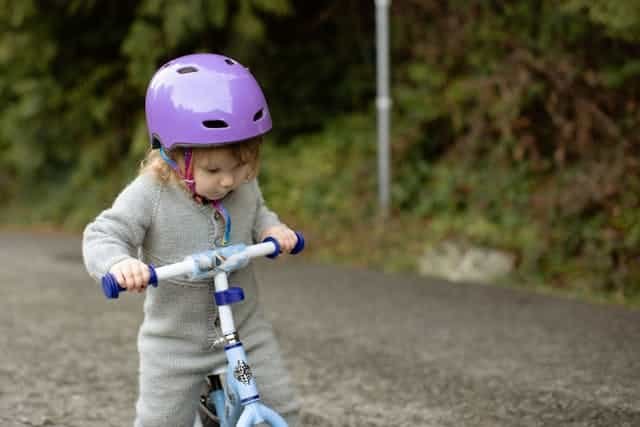Toilet training is a significant milestone in a child’s development, signifying a transition from dependence to independence in personal hygiene. While there’s no magic age for when children should start toilet training, there are indicators that can help parents determine if their child is ready to embark on this journey.
Understanding these indicators is crucial for a smooth and successful toilet training experience. In this article, we’ll explore the key indicators of toilet training readiness and provide practical tips for parents to navigate this stage effectively.
Understanding Toilet Training Readiness
Toilet training readiness varies from child to child, and it’s essential to recognize that readiness involves both physical and psychological factors. Here are some indicators that can help parents determine if their child is ready to begin toilet training:
1. Bladder and Bowel Control:
One of the primary indicators of readiness is when a child demonstrates some control over their bladder and bowel movements. This means that they can stay dry for longer periods and may even show signs of discomfort when their diaper is wet or soiled. Additionally, if you notice that your child’s bowel movements occur at relatively predictable times, it could indicate readiness for toilet training.
2. Interest in the Bathroom:
Children who are ready for toilet training often show curiosity about the bathroom and its functions. They may observe family members using the toilet and express a desire to imitate these behaviors. Showing interest in the toilet, toilet paper, or flushing mechanism can be a positive sign of readiness.
3. Communication Skills:
Effective communication is essential for successful toilet training. Children who can express their needs, such as indicating when they need to urinate or have a bowel movement, are more likely to succeed in toilet training. This communication can be verbal or non-verbal, such as pointing to the diaper or holding their genital area.
4. Motor Skills:
Toilet training requires coordination and motor skills, such as pulling down pants, sitting on the toilet, and wiping. If your child demonstrates the ability to perform these actions independently or with minimal assistance, they may be ready for toilet training.
5. Desire for Independence:
Many children exhibit a desire for independence as they grow older. They may resist wearing diapers or express interest in “big kid” activities like using the toilet. This desire for autonomy can be a strong motivator for toilet training.
6. Consistency in Routine:
Children thrive on routines, and establishing a consistent toileting routine can aid in toilet training. If your child tends to have regular bowel movements at certain times of the day, you can use this predictability to your advantage by encouraging them to use the toilet during these times.
7. Ability to Follow Instructions:
Toilet training requires children to understand and follow instructions from caregivers. If your child can comprehend simple directions like “sit on the toilet” or “push down your pants,” they may be ready for toilet training.
Tips for Successful Toilet Training
Now that we’ve discussed the indicators of toilet training readiness, let’s explore some practical tips for parents to facilitate successful toilet training:
1. Introduce the Concept Early:
Even before your child is fully ready for toilet training, you can begin introducing the concept by reading books about potty training, allowing them to accompany you to the bathroom, and letting them explore a potty chair or toilet seat insert.
2. Create a Positive Environment:
Make the bathroom a welcoming and comfortable space for your child. Use positive reinforcement, praise their efforts, and avoid expressing frustration or disappointment in case of accidents.
3. Use Visual Aids:
Visual aids such as charts or stickers can effectively motivate children during toilet training. Create a chart to track their progress and let them add stickers as a reward for successful trips to the toilet.
4. Dress for Success:
Choose clothing that is easy for your child to remove independently. Elastic waistbands and loose-fitting pants make it easier for children to pull down their pants when using the toilet.
5. Establish a Routine:
Set regular times throughout the day for toilet sits, such as after meals or before bedtime. Consistency is key to reinforcing toileting habits and helping your child become familiar with the routine.
6. Be Patient and Persistent:
Toilet training can be challenging, and accidents are inevitable. Stay patient, remain calm, and reassure your child that accidents happen. Encourage them to try again and emphasize that learning to use the toilet takes time.
7. Celebrate Successes:
Celebrate each milestone and success along the way. Whether it’s the first time they successfully use the toilet or a full day without accidents, acknowledge their achievements and offer praise and encouragement.
Conclusion
Toilet training is a significant developmental milestone for children and a momentous occasion for parents. By understanding the indicators of toilet training readiness and implementing practical tips and strategies, parents can help facilitate a smooth and successful transition from diapers to using the toilet independently. Remember to be patient, consistent, and supportive throughout the process, and celebrate each step forward in your child’s journey toward toilet independence.
Incorporating these toilet training tips into your routine can help make the process smoother for both you and your child. With patience, consistency, and positive reinforcement, you can confidently navigate this milestone and support your child in achieving toilet training success.







